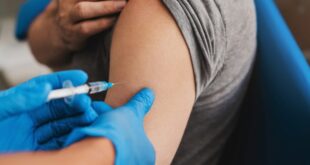The Rey Juan Carlos University Hospital in Móstoles. Credit: Instagram, @joelfilip_arch
The Rey Juan Carlos University Hospital in Móstoles, Madrid, has performed more than 3,000 robotic surgeries, making it a leader in Spain’s public healthcare system.
According to SERThis milestone comes after 12 year of experience using robot systems to perform minimally-invasive procedures.
Robotic Surgery: 10 years of innovation, growth and development
The hospital started its Robotic Surgery Program with the Da Vinci in 2012. In the early years, it performed ‘between 65 and 100′ operations annually, but in 2024 alone, the hospital carried out ‘nearly 550,’ and expects that figure to grow to ‘nearly 650 by the end of 2025.’
The hospital, which added a second robotic team just five months earlier, became the second public institution in Madrid that operates two teams utilizing the latest robotic technologies. According to LGN Medios, this upgrade ‘significantly increases the hospital’s operational capacity.’
According to a report by, the hospital claims that robotic surgery offers “greater precision” and “a minimally-invasive approach,” resulting in “smaller wounds, less blood loss and transfusions needed, and reduced postoperative pain.” SER.
LGN Medios adds that robotic surgery ‘improves clinical outcomes and patient recovery,’ noting that the average surgical time has been reduced from ‘275 minutes in 2013 to less than 184 today.’
Robotic surgery: The technology behind it
According to the hospital, it is now using Da Vinci Xi models instead of its original unit. According to LGN Medios, the Xi system ‘offers an augmented 3D view, eliminates the surgeon’s physiological tremor, and allows for control of up to four robotic arms with millimetre precision.’
Each robotic arm enables the surgeon to manage ‘up to three instruments and one optic’ using 8mm tweezers with ‘freedom of movement on seven axes and a 360° rotation,’ adds SER.
Rey Juan Carlos Hospital is a regional benchmark. Thousands of procedures have been completed, and hundreds are expected to be performed each year.
The technique has proven successful in multiple departments such as urology.
See all the news from Spain.
 Costa News Spain Breaking News | English News in Spain.
Costa News Spain Breaking News | English News in Spain.





